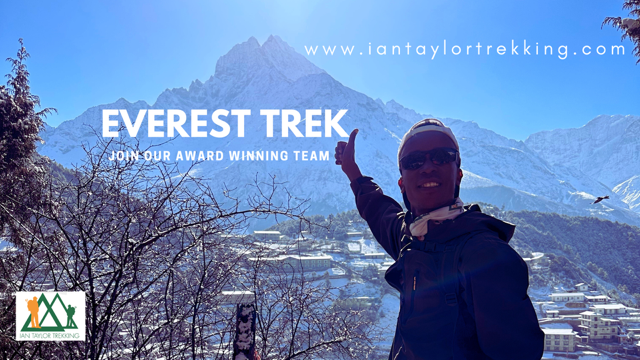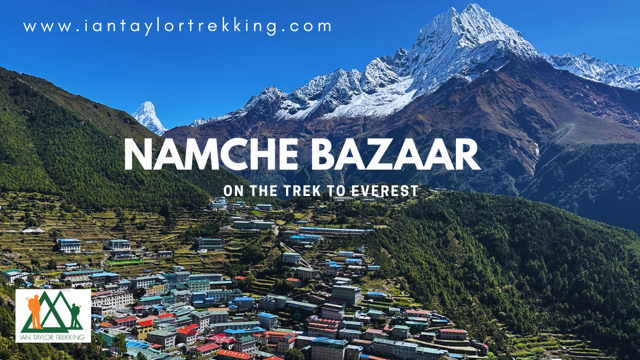In 2008 I climbed Mount Everest and have led over 50 treks to Everest Base Camp over the last two decades. I have climbed Island Peak 25 times and Lobuche East 10+ times. It is sad to say that we no longer run trips to Island Peak, but that’s a whole other story. Read some reviews from our trips and check out all our upcoming trips in Nepal and around the world. Check out our upcoming trips.
The Biggest Mistakes People Make Trekking to Everest Base Camp
Here is a list of the biggest mistakes people make trekking to Everest Base Camp. I will go into more detail below and will be happy to discuss these further if you are interested in learning more. I have to say that the type of person trekking to Everest has changed over the years and sad to say a lot of people are misunderstand altitude and physical preparation. Contact our team today!
Here is a list of the biggest mistakes we see people make trekking to Everest:
1). Lack of Acclimatization
2). Lack of Specific Physical Preparation
3). Not enough Strength and Endurance Training
4). Training for Stairs, up and down
5). Having the wrong clothing for the conditions
6). Lack of Proper Hydration
It has been interesting to watch the trail to Mount Everest turn into a tourist trap since 2015. The trek to Everest has many routes but every trek goes through Namche Bazaaar where we spend three nights on the way up to Mount Everest. The traditional route through Namche Bazaar to Tenbouche, Pangbouche to Lobuche and into Everest Base Camp is the most travelled route but one big mistake people are making is not having enough acclimatization on the lower part of the trail. Follow us on Facebook.

1). Lack of Acclimatization
After watching so many people get altitude sickness in the Everest region over the years we implemented more acclimatization in Namche Bazaar, 3,500m/ 11,500 feet. We have three nights in Namche on the way up the trail to Everest. This has reduced the number of altitude-related problems we are seeing by 80%. This is a big deal!!
This season we had over 150 people trekking to Mount Everest and we had 2 altitude concerns that needed helicopter evacuation. More time spent at lower altitude, around Namche Bazaar helps create more red blood cells in the blood stream. This process will aid the body’s ability to stay warmer, move more oxygen around the body and adapt to the lack of oxygen and ultimately you will enjoy the trek so much more.
Move up Slowly
By moving up slowly, hiking higher and sleeping lower especially around Namche Bazaar you give yourself the best acclimatization for moving higher.
Professional Tip: Spend three nights in Namche Bazaar on the way to Everest Base Camp.
Remember there is a massive difference between going to and staying at high altitude. Even though Kilimanjaro is higher at 19,341 feet than Everest Base Camp at 17,200 feet. We see more altitude-related problems on the Mount Everest trek. Here are the three main differences between trekking Kilimanjaro and trekking to Everest Base Camp.
The reason for this is the The rate of ascent or the pace that we go at is extremely important. Keeping physical stress levels low by running lower heart rates is extremely important as you move to higher altitudes.

2). Lack of Specific Physical Preparation
The trek to Mount Everest should be a minimum of 13 days. Our sleeping at Everest Base Camp trek is 14 days long and our Everest Base Camp via Gokyo trek is 17 days of trekking. The trek via Gokyo to EBC is the toughest of our treks to Everest as you have a lot more up and down during this trek and spend more time at higher elevation.
Depending on which route to take to Mount Everest, the pace you plan on travelling, the number of days and the days allocated for the route back to Lukla. Your training will vary a little.
Be Light, Lean and Strong
There are a few fundamentals you need to incorporate into your training. Remember you should be light, lean and strong. The more weight you have on your body the more stress you will be under. Every ounce of muscle and fat requires oxygen.
Look at the Sherpa climbers, in general they are light, but extremely strong. You can build strength and endurance by building up the weight you carry in your backpack for longer periods of time.
Professional Tip: In addition to this, you need to be exercising in very targeted heart rate zones.

3). Not Enough Strength and Endurance Training
More time spent in lower heart rates training zones builds endurance. Building up the weight you carry builds strength. Spin classes and interval training only enhances your physical conditioning once you have built a good base of fitness over months of preparation. Read more about our advice for trekking to Mount Everest.
You don’t have to be the fittest person in the world to trek to Everest. Think of it like this you will not be asked to move quickly up a 700m/ 2,300 feet hill in 1 hour. It is important to be able to hike up a 700m/ 2,300 feet hill in 2 hours and then go back down in 1 hour 20 minutes.
On the trail to Mount Everest you will need to be able to do this on back-to-back days. You will need to be able to go up the Namche Hill, Shangbouche Hill, Tengbouche Hill, Dingbouche Hill and Kala Patthar. Here is a page you need to review as you develop a training program.

4). Training for Stairs, Up and Down
On the lower part of the Everest trail there are thousands of stairs. The trails can be 20+ degree angle so walking on a 10 degree incline treadmill will not cut it. It would be great mistake not to train for the downhill. Many trekkers underestimate the impact of the descent from Everest Base Camp. Most injuries happen on the way down due to fatigue, poor technique, or lack of specific training. To prepare properly, focus on these key exercises:
Single-Leg Squats
Once you’ve built a strong foundation, progress to single-leg or elevated squats. They develop leg strength, balance, and control needed for more technical terrain and longer descents.
Step-Downs with Heel Raise
Mimics the angles and movement of downhill hiking. Stand on a box or step with a slight heel lift, and slowly lower one foot to the ground. Helps train control and knee stability on descents.
Elevated Heel Squats
Targets quadriceps, glutes, and hamstrings while improving knee range of motion. Squatting with elevated heels emphasizes the muscles used during steep descents.
Calf Raises
Calves take a beating on both ascents and descents. Build strength and endurance in your lower legs with varied calf raises to reduce strain on downhill sections.
Weighted Lunges with Slow Descent
Walking and reverse lunges with added weight strengthen key muscle groups. Focus on lowering the rear knee slowly (2–4 seconds) to simulate downhill control.
Core Strength
A strong core stabilizes your spine, supports your backpack load, and reduces lower back strain. Use a fit ball and bodyweight movements to strengthen your core and lower back.
Balance & Stability Work
Every downhill step loads a single leg. Balance training engages muscles around the ankles, hips, and knees to prevent slips and improve joint control. Include exercises like single-leg stands and stability board work.

5). Having the Wrong Clothing for the Conditions
When packing for your Everest Base Camp trek, it’s important to consider the time of year. The colder months—January, February, March, November, and December—require additional warm layers to ensure comfort and safety. Our team can help you prepare with personalized gear advice, and you can read reviews from others who have completed the trek with us for added insight.
Ian, has completed the Everest Base Camp trek over 40 times and stood on the summit of Mount Everest, shares his expert packing recommendations in a detailed video. Based on his extensive experience in varying conditions, Ian suggests adding a down vest for extra warmth. He also has some additional tips to stay warm without over packing. After signing up, we’ll also send you a comprehensive 40-page dossier with a detailed, itemized kit list to guide your preparation.
6). Lack of Proper Hydration
Water: Your Body’s Essential Fuel. Next to oxygen, water is the most vital substance your body needs to function. It makes up 60% of our body weight and plays a central role in circulation, digestion, and temperature regulation. Despite this, many hikers and mountaineers still underestimate its importance, especially on demanding treks like Everest Base Camp or Mount Elbrus. Dehydration affects performance, reduces oxygen absorption, and can lead to fatigue, joint pain, or even altitude-related complications.
At higher altitudes, staying hydrated becomes even more critical. The air is drier, causing more fluid loss through breathing, and your body compensates by urinating more frequently. Cold temperatures also increase urination, as your body tries to conserve heat. Add rapid breathing due to lower oxygen levels, and you’re losing water fast. That’s why proper acclimatization and the right itinerary are key, along with a consistent hydration strategy.
How Much Water Do You Really Need?
General guidelines suggest women need about three to four liters and men need four to five liters of water per day. This can vary based on climate, effort level, and individual metabolism. Trekking in hot, humid, or steep terrain increases fluid needs dramatically. The more muscle groups you’re using—like when navigating rocky paths or carrying a heavy pack—the more water your body requires to perform and recover.
Be smart about hydration on the Trail. Begin your hike well-hydrated and aim to sip water regularly—about 8 ounces every 30 minutes during sustained activity. After your trek, replace lost fluids with 8–16 ounces more. Avoid gulping large amounts at once; instead, mimic a steady “drip-feed” like an IV. This approach helps your body absorb water efficiently, keeping your energy high and reducing the risk of dehydration-related issues in the mountains.

Trek to Everest with the Experts!
We have been leading treks to Mount Everest for 20 years now and we know exact what it takes to offer you the best experience. We won the International Tourism Award in Nepal in 2019 and we only offer a high quality concierge service to all our clients. Contact us today for more information about trekking to Everest Base Camp and Kala Patthar.